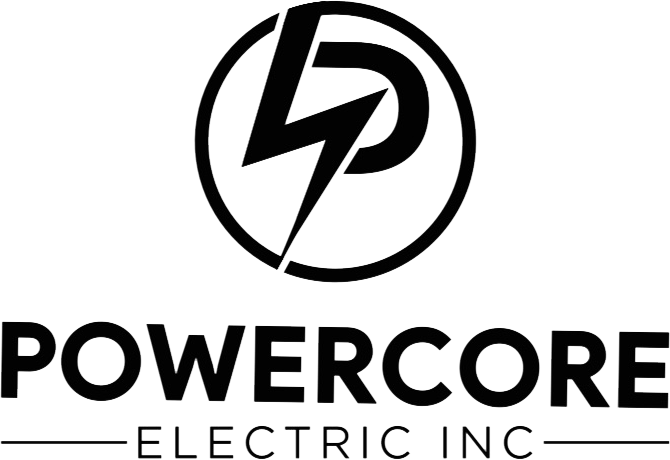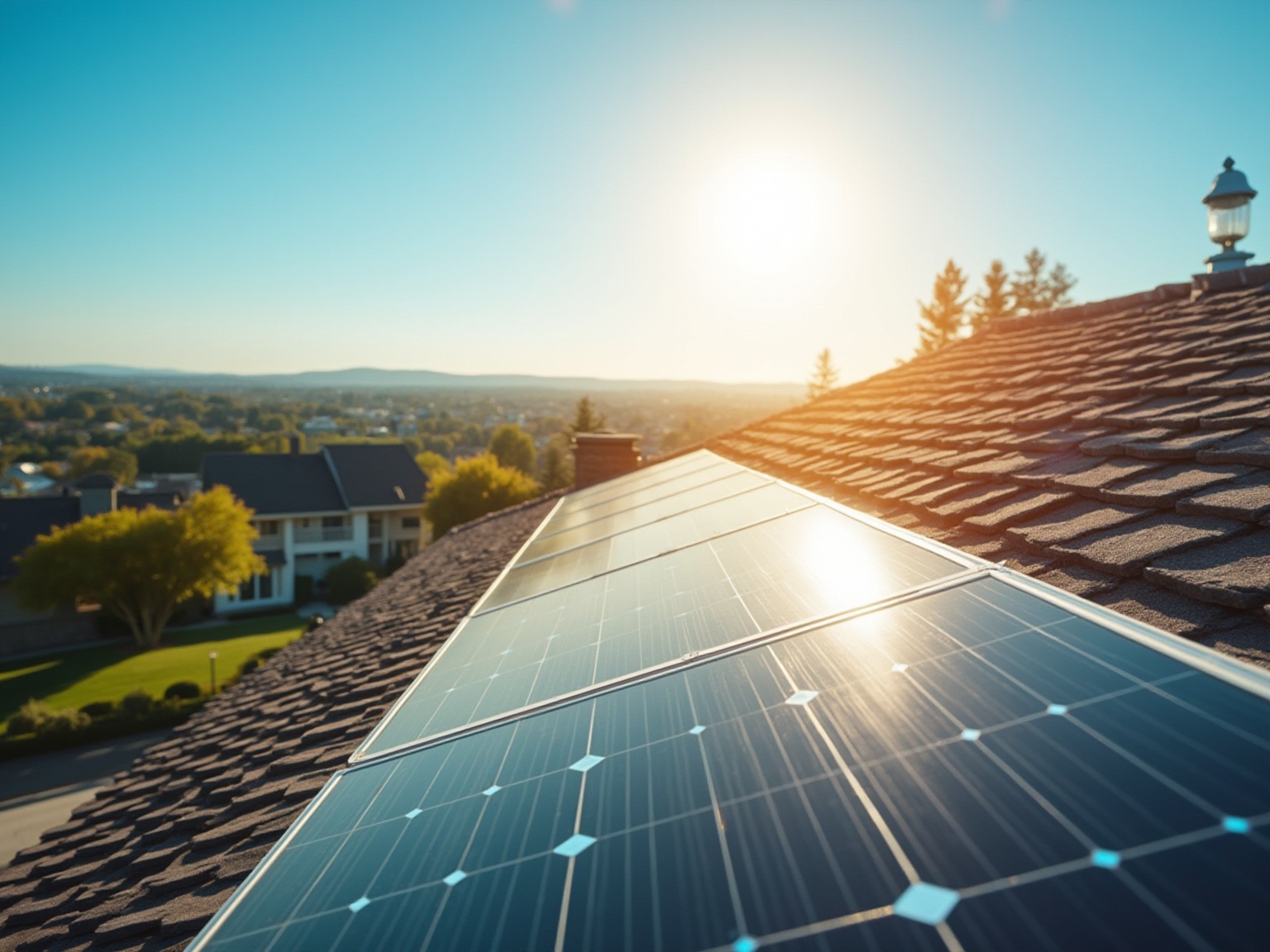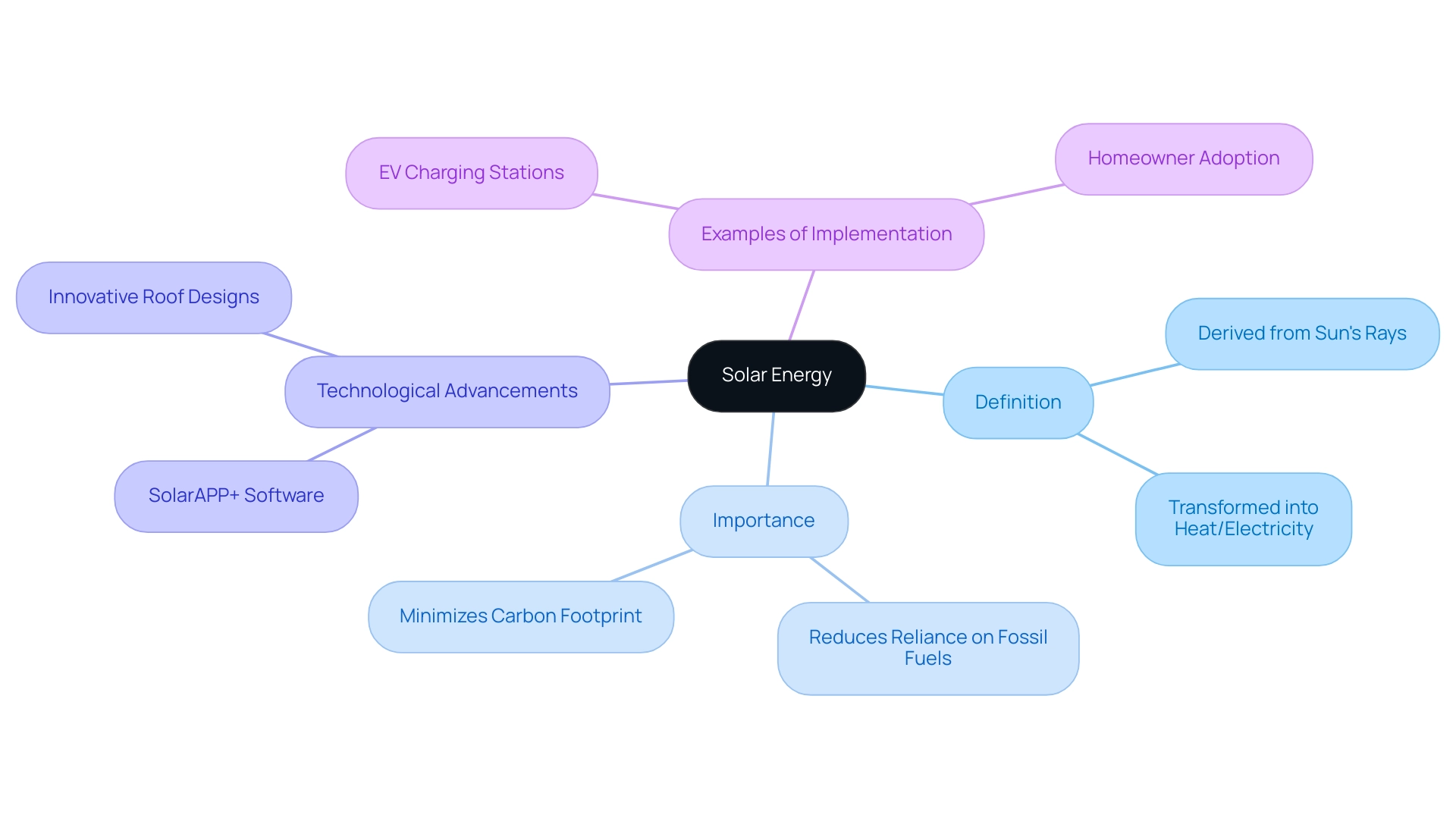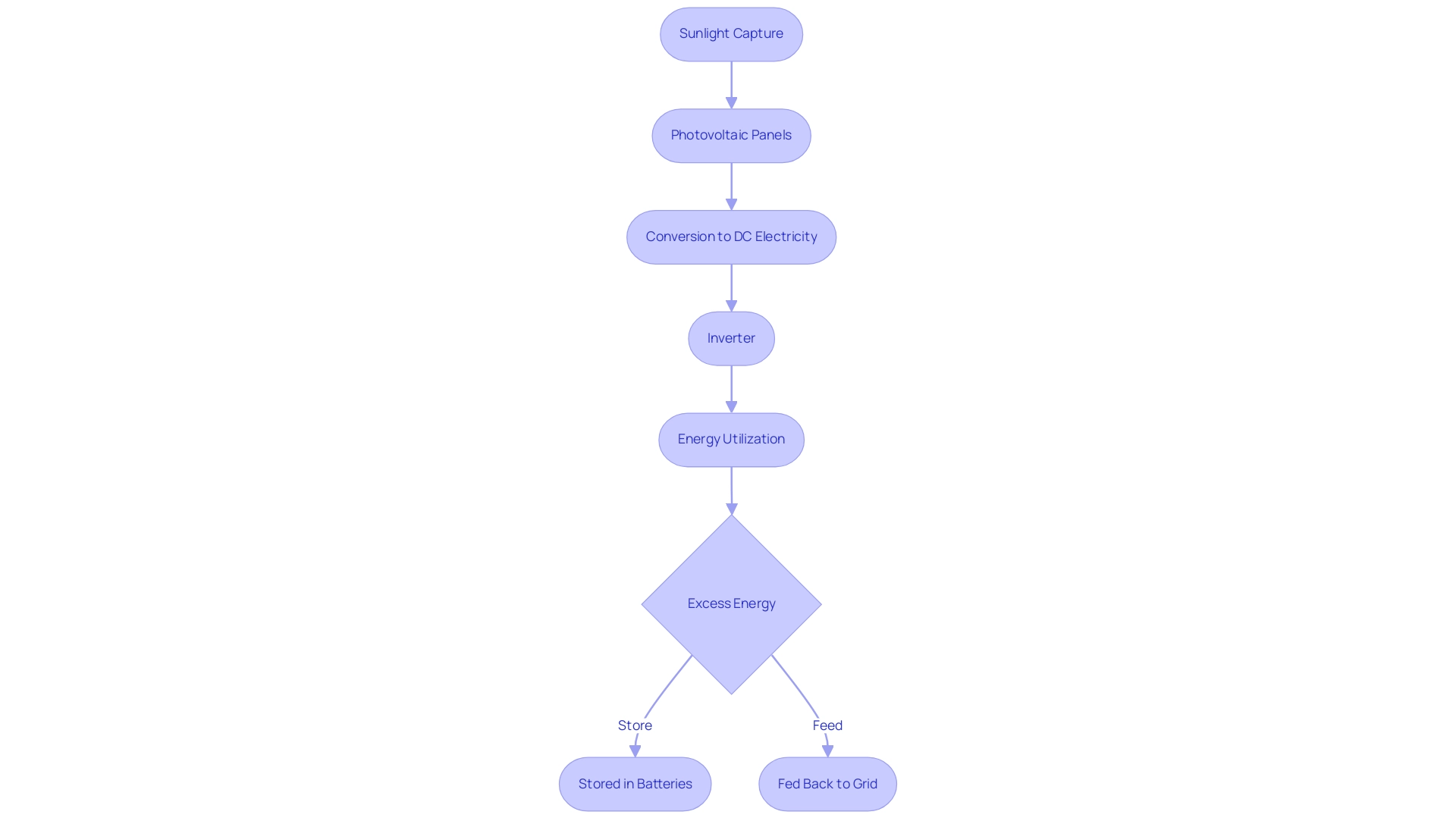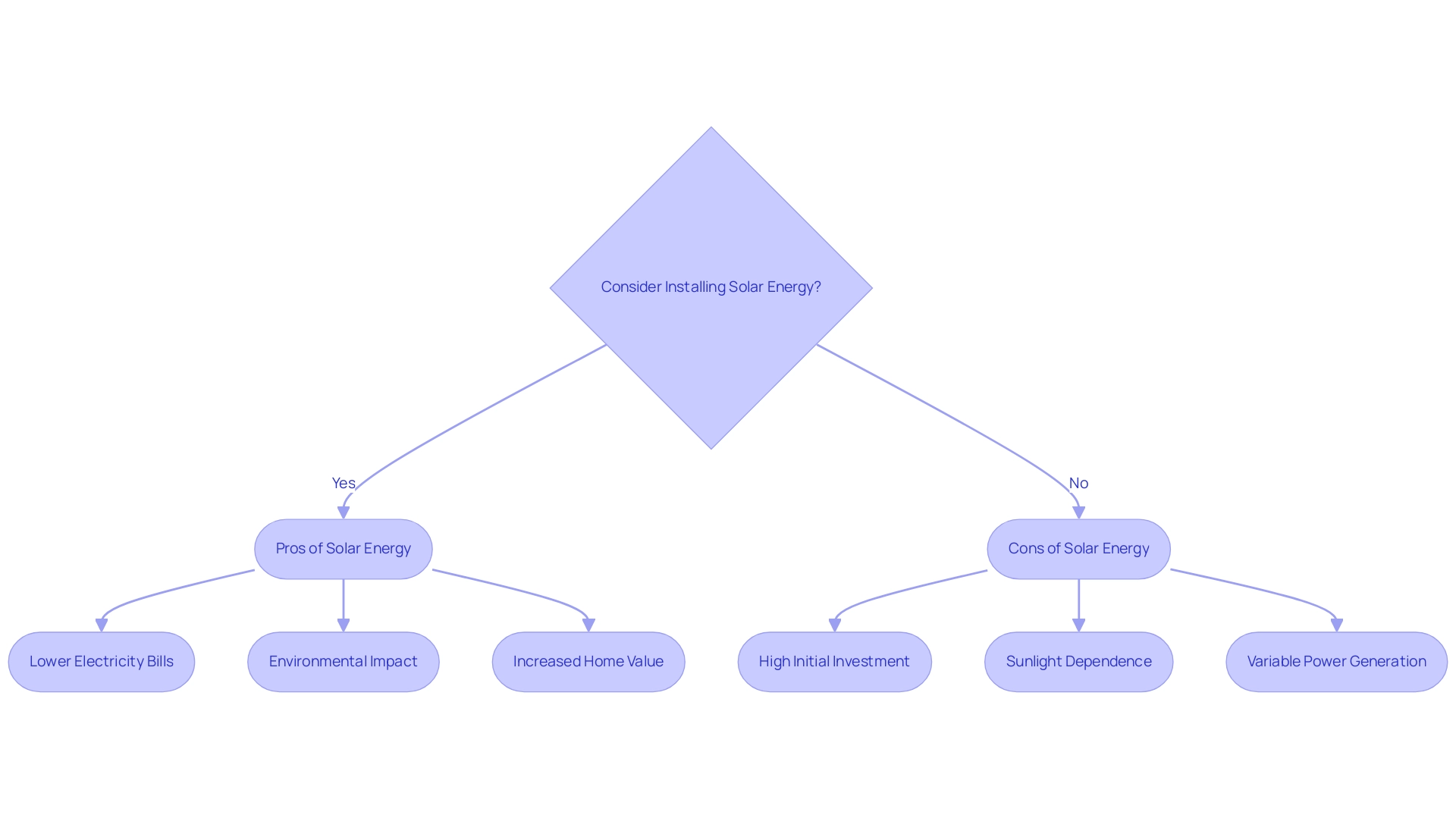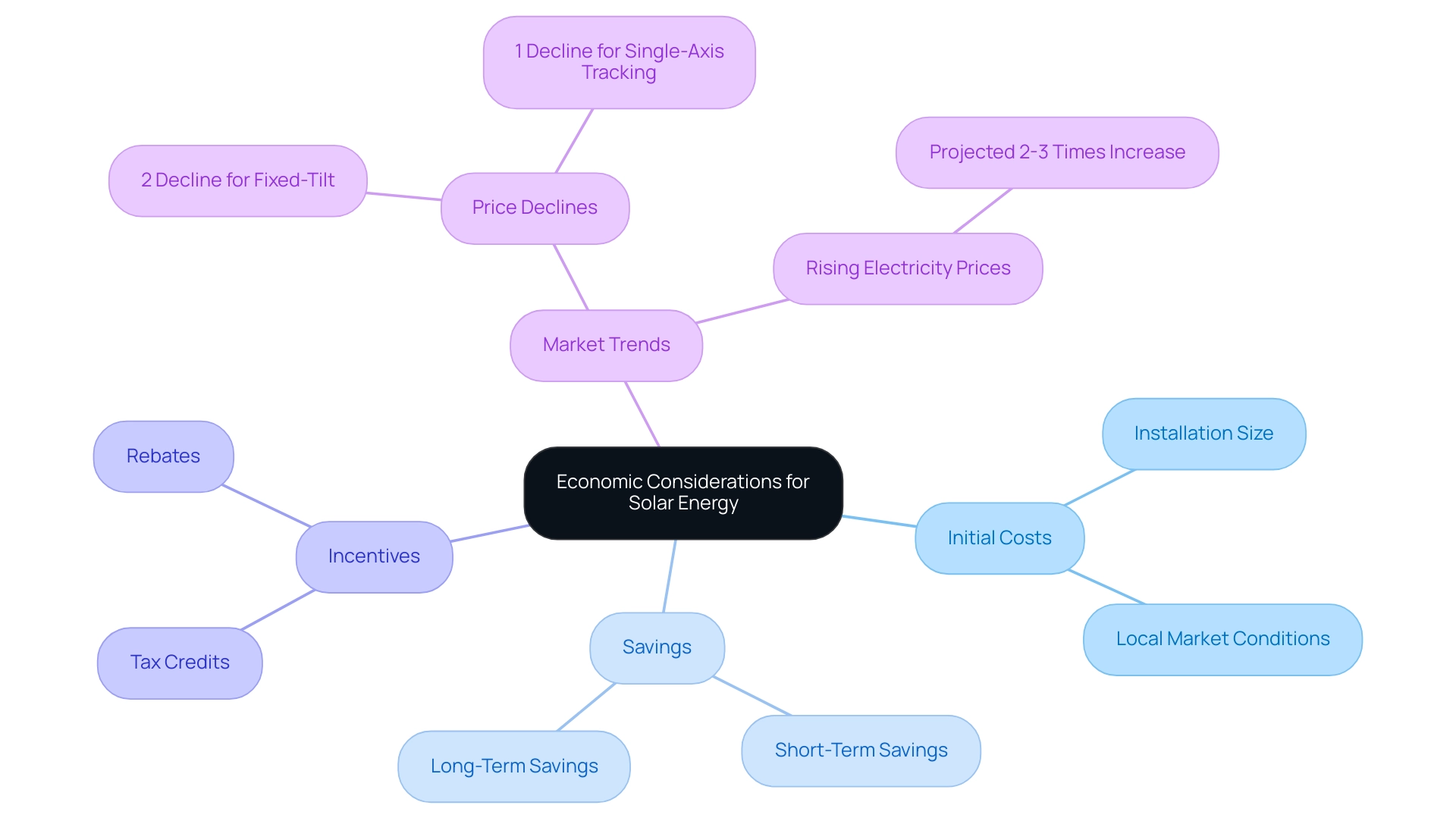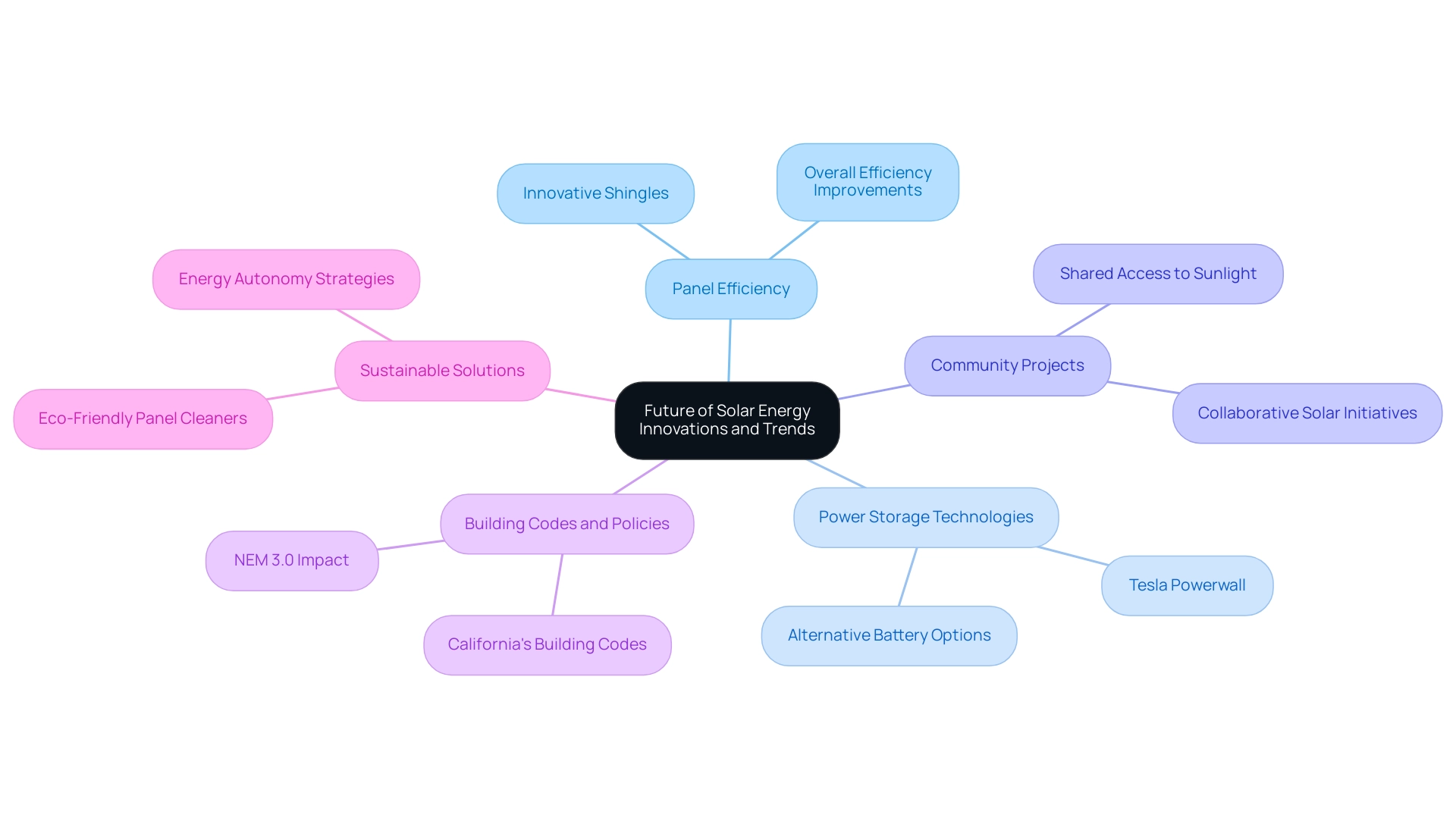Overview
Alternative energy solar is becoming increasingly important as a sustainable solution for reducing fossil fuel reliance and minimizing carbon footprints, with projections indicating it could supply a significant portion of the world’s electricity by the end of the decade. The article outlines how advancements in technology, declining installation costs, and supportive legislation are making solar power systems more accessible and efficient, thereby encouraging homeowners to invest in this eco-friendly energy source.
Introduction
The sun has long been a powerful force, but its potential as a clean energy source is only now being fully realized. As homeowners increasingly seek sustainable solutions, solar energy stands out as a beacon of hope for both the environment and personal finances. With advancements in technology and a growing commitment to reducing carbon footprints, embracing solar power has never been more appealing.
From innovative solar panel designs to community initiatives that promote accessibility, the landscape of solar energy is rapidly evolving. This article delves into the many facets of solar energy, exploring how it works, the benefits and challenges it presents, and the economic considerations that make it a smart choice for today’s eco-conscious homeowner.
Whether contemplating a switch to solar or simply looking to understand its impact, readers will find valuable insights that illuminate the path towards a greener future.
Introduction to Solar Energy: Definition and Importance
Alternative energy solar, which is derived from the sun’s rays, can be transformed into heat or electricity to power our homes, making it an essential solution for reducing reliance on fossil fuels and minimizing carbon footprints. As we enter 2024, the significance of sunlight power is clearer than ever. Eco-conscious homeowners are increasingly adopting alternative energy solar solutions, not only to promote sustainable living but also to protect our planet.
Recent reports from BNEF indicate that photovoltaic power could produce a quarter of the world’s electricity by the decade’s end, highlighting its increasing global acceptance.
In Southern California, initiatives like solar-powered EV charging stations in Los Angeles are paving the way for a greener future, while innovative roof designs in San Diego maximize sunlight capture. Furthermore, advancements like NREL’s SolarAPP+ permitting software have streamlined the installation process, with 85% of installers noting significant improvements in efficiency and speed. This software not only streamlines permitting but also diminishes the time and expenses related to installation, making renewable power more attainable.
Amidst a nearly 40% decrease in installation expenses over the last ten years, despite inflation and supply chain challenges, renewable power is now more attainable than ever. By adopting alternative energy solar, homeowners are not just investing in their properties; they are also playing a vital role in creating a healthier environment for future generations.
Ready to make the switch to clean energy? Reach out to Powercore Electric today to discover what solar power can offer you. Take the first step towards independence, financial savings, and a brighter, more sustainable future.
How Solar Power Systems Work: Collection and Utilization
Solar power systems are created to capture the sun’s light and convert it into electricity for your home. At the heart of these systems are photovoltaic panels, which capture sunlight and convert it into direct current (DC) electricity. This is where the magic begins!
The DC electricity is then sent to an inverter, a crucial component that changes it into alternating current (AC) electricity—making it suitable for powering your home appliances. If you produce more electricity than you need, the system doesn’t go to waste. Excess energy can be stored in batteries for later use or fed back into the grid, allowing you to enjoy potential energy savings and even earn credits from your utility company.
As of 2024, advancements in panel technology have led to impressive efficiency rates, making these systems more effective than ever. With over 9.4 GW of photovoltaic cells imported, representing 75% of the tariff-rate quota, the current market dynamics are robust. The Inflation Reduction Act has also increased deployment projections for photovoltaic systems by 46%, highlighting robust legislative backing for renewable resources.
Incorporating both active and passive heating methods can further enhance your energy efficiency—active systems provide reliable heating through pumps and controls, with liquid setups utilizing water or antifreeze, while air systems circulate warmed air through ducts. Passive systems use natural sunlight and architectural design to maintain a comfortable environment in your home at a reduced expense. Additionally, installation considerations such as roof type, angle, and condition are crucial for optimal performance; ideally, photovoltaic panels should be installed at a 15 to 45-degree pitch on a south-facing roof.
As Ben Zientara, a Policy Analyst, states, ‘we have all the technology we need to do this today, but we need help from state and federal legislators and regulators to deploy, deploy, deploy.’ So, if you’re contemplating alternative energy solar, be aware that these systems not only help the environment but also provide substantial savings, job creation, and long-term value for your home!
Pros and Cons of Solar Energy: Weighing the Benefits and Drawbacks
Alternative energy solar offers numerous advantages for property owners, making it an attractive option for individuals seeking to lessen their environmental impact and save on energy expenses. One of the most important benefits of alternative energy solar is the possibility of lower electricity bills; many residents report savings that can reach up to 50% on their monthly utility costs after transitioning to renewable energy. This is especially true under the 200% rule, where understanding residential panel sizes plays a crucial role in maximizing efficiency and savings.
For example, case studies indicate that homeowners who adjusted their panel sizes according to this guideline have greatly improved their savings and overall system performance. Additionally, the environmental impact is noteworthy; alternative energy solar significantly lowers greenhouse gas emissions, helping to combat climate change. Home values also tend to increase, with studies indicating that properties fitted with alternative energy solar photovoltaic panels can sell for 4% to 6% more than similar homes without them.
However, it’s essential to consider the drawbacks as well. The initial investment for photovoltaic systems can be high, which may deter some homeowners. Furthermore, photovoltaic panels require adequate sunlight exposure to function effectively, a limitation in shaded wooded areas.
Variability in power generation due to weather changes necessitates having a backup power source for reliability. Significantly, in 2023, many property owners chose to install energy storage systems mainly for backup power instead of financial benefits, indicating a change in focus towards resilience. This trend emphasizes a wider shift in the renewable market, where residents increasingly prioritize dependability over savings.
According to Barry Elad, a senior writer, approximately 90% to 97% of photovoltaic materials are recyclable, adding an eco-friendly facet to this technology.
Moreover, it’s important to acknowledge the challenges in the supply chain that have increased the cost of renewable energy over the last two years, impacting overall investment decisions. Furthermore, 85% of installers utilizing NREL’s SolarAPP+ permitting software state that it greatly simplifies the permitting procedure, making it more manageable for property owners to navigate installation.
By thoughtfully considering these advantages and disadvantages, including the benefits of both active and passive renewable solutions, property owners can make a well-informed choice about whether alternative energy solar aligns with their values and financial objectives. Comprehending residential photovoltaic panel dimensions is crucial; for instance, a comprehensive guide can assist property owners in identifying the ideal size for their particular requirements. As the terrain of alternative energy solar keeps changing, understanding both its advantages and drawbacks will enable residents to adopt sustainable power solutions.
Economic Considerations: Costs, Savings, and Incentives for Solar Energy
When considering a power system, it’s essential to recognize that initial costs can fluctuate significantly based on the installation size and local market conditions. However, many eco-conscious homeowners discover that they can recover their investment through significant savings on power within just a few years. With wholesale electricity prices expected to rise to two to three times greater than 2020 averages, the financial benefits of transitioning to alternative energy solar have never been clearer.
Furthermore, utility-scale system pricing has demonstrated a 2% decline for fixed-tilt and a 1% reduction for single-axis tracking year-over-year, indicating a favorable trend in renewable power expenses. Powercore Electric provides professional installation services, assisting homeowners throughout the whole process and helping them handle increasing utility expenses efficiently. Government incentives, including tax credits and rebates, can further alleviate those upfront expenses, making alternative energy solar solutions even more accessible.
As Cristen Hemingway Jaynes aptly points out, the need for alternative energy solar solutions is urgent, especially considering that the 2°C climate warming target is now deemed unattainable. To maximize your savings, be sure to investigate local incentives and financing options tailored to your area. For instance, while conventional electricity expenses keep increasing, investing in alternative energy solar, such as photovoltaic panels, can result in considerable long-term savings.
Additionally, case studies confirm that even as costs rise above pre-Covid-19 levels, investing in alternative energy solar technology continues to stand out as one of the most economical choices for new electricity generation, reinforcing the case for these solutions.
The Future of Solar Energy: Innovations and Trends
The future of photovoltaic power is indeed promising, with significant strides being made in panel efficiency and power storage technologies. Homeowners can anticipate exciting innovations like shingles that harness sunlight, which blend seamlessly into the roofline, and community projects that offer shared access to sunlight for those who may not have suitable rooftops. As we near 2024, advancements in these fields promise to make renewable power even more accessible and affordable.
Notably, the transformative impact of California’s building codes and NEM 3.0 is paving the way for increased renewable energy adoption, offering new opportunities for homeowners, particularly in Northern California. The International Energy Agency’s Piotr Bojek predicts that by the end of this decade, photovoltaic technology is set to become the largest renewable source, surpassing both wind and hydropower. With global investments in renewable energy capacity additions exceeding USD 480 billion in 2023, it’s clear that the momentum is building.
Moreover, continuous investigation and advancement activities in photovoltaic technology, along with the concerning increase in North Pole temperatures—hitting 20°C above average—highlight the necessity of shifting to renewable power sources such as photovoltaic. Homeowners should also consider eco-friendly panel cleaners, such as biodegradable solutions that effectively maintain efficiency without harming the environment. Moreover, choosing the appropriate battery, such as the Tesla Powerwall, can improve power storage and utilization efficiency.
As technology keeps advancing, property owners can anticipate alternative energy solar solutions to energize their residences more efficiently and affordably, creating an exciting opportunity to explore alternative energy options while enhancing your investment in energy autonomy. Evaluating solar service providers will further ensure that homeowners receive the best value for their investments.
Conclusion
Embracing solar energy represents a significant step towards a sustainable and financially savvy lifestyle. As highlighted, solar power not only reduces reliance on fossil fuels but also offers substantial savings on electricity bills, with many homeowners experiencing reductions of up to 50%. The advancements in technology, such as improved solar panel efficiency and streamlined installation processes, have made it easier than ever to adopt this clean energy source.
While the initial investment may seem daunting, the long-term benefits, including:
- Increased home value
- Potential government incentives
provide a compelling case for making the switch. Understanding both the advantages and challenges of solar energy is crucial for homeowners looking to align their values with their financial goals. As the market continues to evolve, innovations like solar shingles and community solar projects are paving the way for broader accessibility.
Looking ahead, the future of solar energy is bright. With ongoing technological advancements and a growing commitment to renewable energy, homeowners can expect even more efficient and cost-effective solutions. By considering solar energy, homeowners are not just investing in their properties but also contributing to a healthier planet for future generations. Now is the perfect time to explore solar options and take meaningful steps towards energy independence and sustainability.
